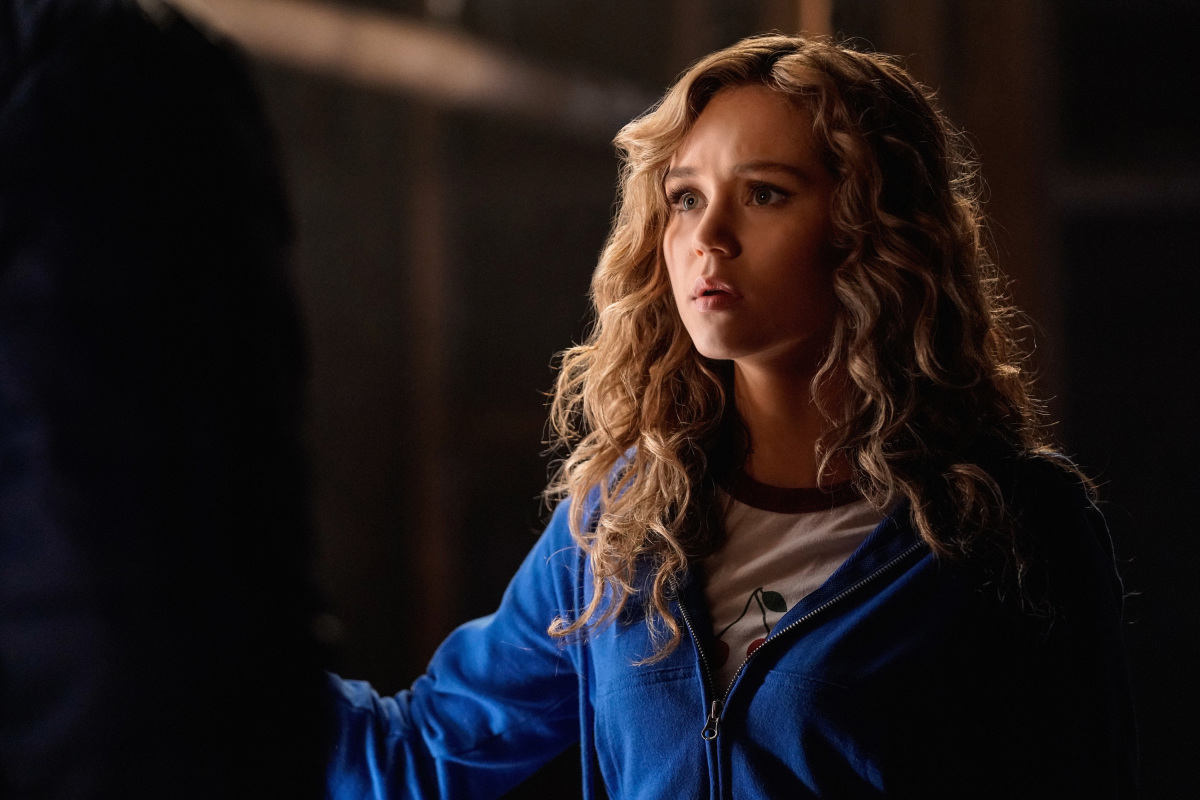Here’s a statement that will come as no surprise to any frequent readers of this or any other film and television-centered publication on the internet: superhero stories tend to provoke strong reactions. Make a film in the vein of “The Dark Knight” and someone will, as if on cue, lament that comic book movies have gotten too grim and self-serious. Create something more akin to “Guardians of the Galaxy” and someone somewhere will snipe that the characters are being treated frivolously, that it’s all too ridiculous and ignores the life-or-death stakes of the thing. Back and forth the pendulum swings, even when the work is exemplary: to some, “Jessica Jones” is unnecessarily dark; to others, “DC’s Legends of Tomorrow” is too flippant and playful to be taken seriously. Surely many such things will be said of “Stargirl,” the new DC Universe series from creator and DC Comics bigwig Geoff Johns and his co-showrunner Melissa Carter (the series will air the following day on The CW, give or take a few minutes axed to make room for commercials). What’s interesting is that it’s likely to get those criticisms from both sides. Such is the price of being a family-friendly crowdpleaser—and even if its firmly middle-of-the-road stance prevents it from excelling in any one direction, it doesn’t diminish the overall appeal.

Some of that comes down to the show’s choice of protagonist. Courtney Whittmore (Brec Bassinger) has kind of a lot on her plate right now. The high school sophomore is dealing with the stress of making new friends in a new school after her mother (Amy Smart) moves them from California to Blue Valley, Nebraska with new husband/stepfather Pat Dugan (Luke Wilson), a charming goober, and his son Mike (Trae Romano). Mike loves Pop Tarts. Courtney, on the other hand, loves reminding Pat that he’s not her real dad, though her “real dad” hasn’t been seen since bailing on her one Christmas Eve, a decade in the past. By complete coincidence, Pat also lost someone that same night: Sylvester Pemberton (Joel McHale), better known as Starman, who died fighting various and sundry members of the Injustice Society of America that night and who knew Pat best as his sidekick, Stripesy. When Courtney, sulking in very teenage way in her new basement, stumbles on photos of Pat, Starman, and the long-since dismantled Justice Society of America, she realizes her stepdad might be more than he seems—and when a mysterious, glowing, gravity-defying staff seems to call to her from a heavy crate, she senses that she herself might be different, too.
Like many superhero stories, “Stargirl” divides itself between the two halves of Courtney’s life: the half where she smiles at cute boys, butts heads with teachers, and overhears all manner of things while standing at her locker, and the half where she hangs out with a glowing, sentient staff that flies her through the air and serves as gymnastics equipment and explosive device in one. This series is far, far more interested in the latter; school seems mostly to be an excuse to put Courtney in the orbit of, among others, fellow frustrated teens Yolanda Montez (Yvette Monreal), Beth Chapel (Anjelika Washington), and Rick Tyler (Cameron Gellman), each of whom has their own cross to bear. And that’s perfectly okay. The scenes in which Courtney gets to know her new weapon/flying machine/buddy are among the most engaging in the five episodes provided to critics.
That’s not a complaint, and it’s easy to see why the balance might have shifted this way. There’s an energy about “Stargirl” that practically demands to be described as “Amblin-esque.” Frequent DCTV director Glen Winter, who helms the pilot, captures the action sequences with his usual easy grace, but also makes time to evoke films like “E.T.,” “The Neverending Story,” and “The Iron Giant.” There’s a balance struck between playful adventure and lingering, haunting loss, but as Courtney tests her new boundaries, it’s the playful stuff that wins out. The obvious increased budget and technical wizardry of those involved is immediately apparent—the effects are much more in line with a comic book film than many of its TV-network brethren. More importantly, no less apparent is the jubilant energy of Bassinger, who plays Courtney with the undeniable sense of invincibility and naivete so often glimpsed in the young and relatively privileged.

Still, it’s difficult not to wish that a little more of that panache could be detected in the scenes in which Courtney isn’t flying through the air or accidentally trouncing bullies. Wilson’s warn affability does a lot to correct for this mild deficiency—while not given much to play beyond irritation and concern, Pat Dugan feels more like a full-fledged human being in one scene than any of the other adults do over the first five episodes in total, and Wilson’s gentle rapport with Bassinger grows exponentially. As is often the case, what doesn’t work is only underlined by what does—the clear highlight in this early batch of episodes is “Wildcat,” in which Courtney begins working to form a new Justice Society, and it succeeds largely because it focuses on the emotional life of Yolanda. That’s precisely what Courtney’s story is missing, and Monreal’s standout performance owes much to the fact that she’s given weighty material with which to reckon. She does so admirably.
“Admirably” is a pretty decent descriptor for much of “Stargirl,” truth be told. This isn’t a perfect series, but there’s plenty to admire. Comic book devotees will find themselves swimming in easter eggs and wink-wink references. Fans of the other shows in The CW’s Arrowverse will easily latch onto the charming, diverse cast; families looking for another show to watch together will be glad to know that this is more like the early seasons of “The Flash” and “Supergirl’ than any other comic book adaptation. Yes, there are hiccups—a piece of wooden dialogue here, and inexplicable cover of “MMMbop” there—but Bassinger, Wilson, and the rest of the cast are so engaging that it’s hard to pick such nits. There are moments of real darkness, and moments of delightful silliness. It is neither grim nor frivolous. It’s just a good time—and who doesn’t want that every once in awhile?
Five episodes screened for review. Premieres May 19th.












